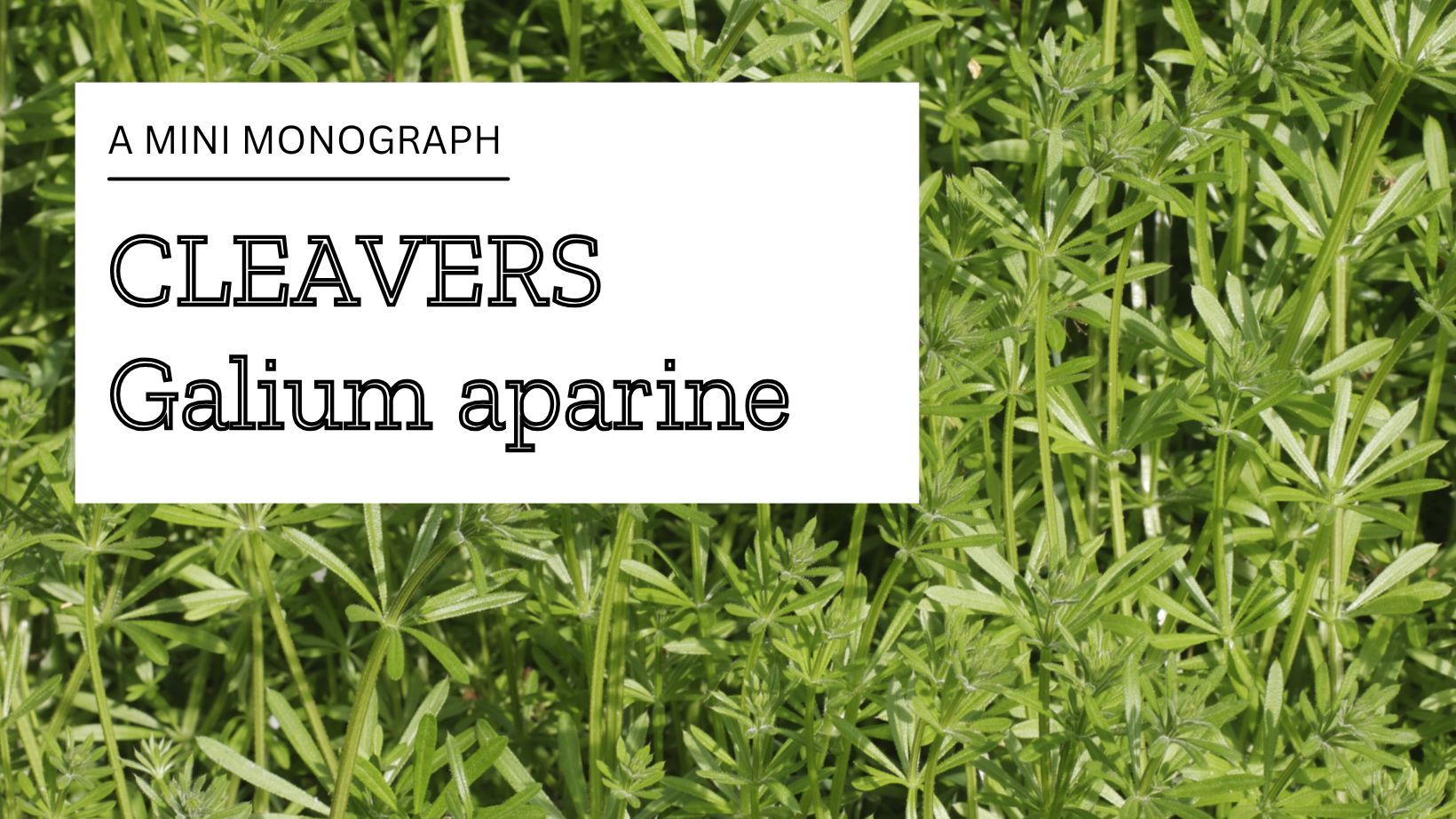Cleavers (Galium aparine) Mini Monograph
Mar 26, 2025
Cleavers - Galium aparine
Check out this springtime weed growing in an untended nook of your backyard...Cleavers!
The scientific binomial for this tender climber is Galium aparine and it is in the Rubiaceae family. Energetically, it is cooling and drying with a fresh, pleasant taste. It is most commonly used as a soothing, relaxing & diffusive diuretic; it increases aqueous excretions (makes you pee), corrects inability to pass normal catabolic wastes (making it a great detoxifying alterative) and relieves irritation. It is also shown to reduce stones and fibrocystic tissue.
Using the doctrine of signatures as a guide, where physical characteristics of plants (including shape, color, texture, and smell) reveal their therapeutic value, the creeping, covering, clinging characteristics of this herb reflect the vast network of vessels and nodes that comprise the lymphatic system, making cleavers one of the best herbs for gently stimulating the flow of lymphatic fluid.

- cooling/drying
- fresh, pleasant taste
- soothing, relaxing & diffusive diuretic;
- diuretic, increases urination, helping the body get rid of excess water
- corrects inability to pass normal catabolic wastes and relieves irritation
- shown to reduce stones and fibrocystic tissue
FAMILY: Rubiaceae
PARTS USED: Aerial parts
HABITAT: A weedy plant native to North America that likes moist, shady areas.
PRIMARY CONSTITUENTS: flavonoids (quercetin), iridoid glycosides, coumarin, tannins, vitamin C, citric acid.
INDICATIONS: Cleavers is a mineral rich herb that gently supports the healthy flow of lymphatic fluid throughout the body. Its benefits can be enjoyed by juicing the leaf and stem or making a fresh plant tisane. It is difficult to dry and store so it is best to take advantage of it while it is in abundance all around you.
Check out this short video on how to make an easy Cleavers juice!
🎓 Ready to Master Herbal Medicine Making? Take our complete Herbal Remedies Intensive course and master all 4 primary extraction solvents (water, oil, alcohol, and glycerin) while learning the science of phytochemical polarity and solvent selection.
